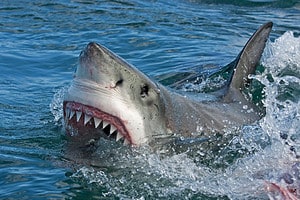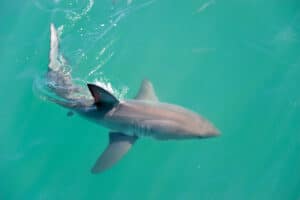Washington state is home to incredible wildlife on land, in the sky, and in the sea. Amongst the incredible aquatic species off the Washington coast in the Pacific Ocean is the blue shark. These majestic animals can range greatly in size which lends to their intrigue. This article will discuss all you need to know about blue sharks and reveal the largest blue shark ever caught in Washington.
What is a Blue Shark?
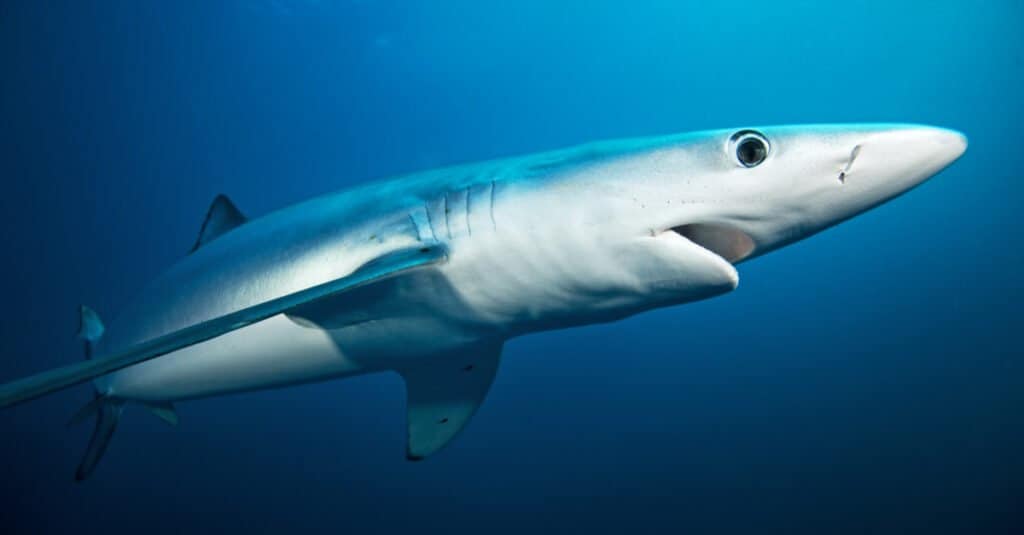
Blue sharks are a type of requiem shark alongside silky sharks and others.
©Martin Prochazkacz/Shutterstock.com
Blue sharks (Prionace glauca) are a widely distributed and well-known species of shark belonging to the family Carcharhinidae. They are part of the group of sharks referred to as requiem sharks, which also includes species like the silky shark, oceanic whitetip shark, and spinner shark.
Appearance
Blue sharks are easily recognizable by their sleek and slender body shape, which allow for efficient swimming in open waters. They have a distinct deep blue coloration on their upper body, fading to a lighter shade on their sides and belly. This coloration serves as a form of camouflage that helps them blend into the ocean’s depths when viewed from above or below.
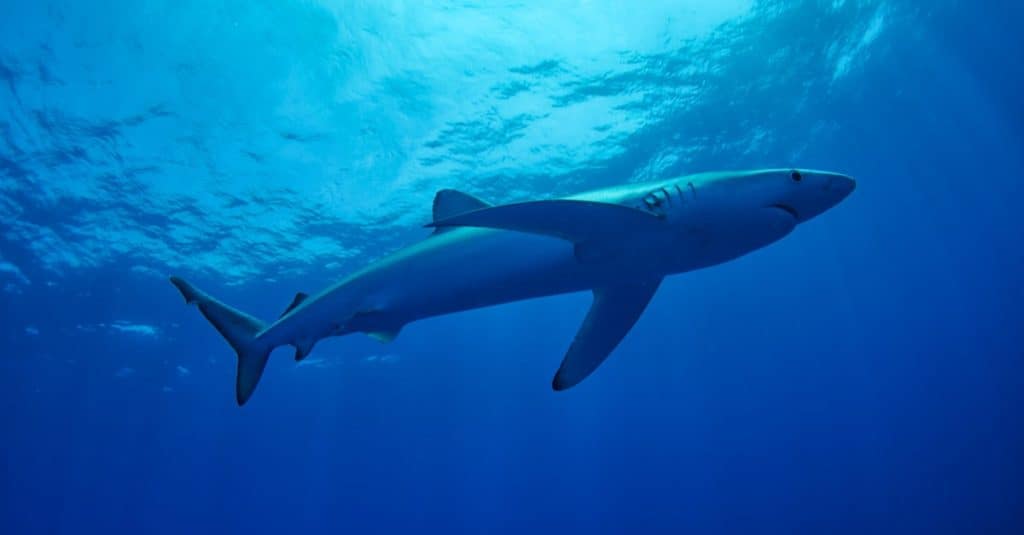
At certain angles, especially when viewing from directly above or below, blue sharks have effective camouflage that makes them hard to distinguish in the open ocean waters.
©Pommeyrol Vincent/Shutterstock.com
One of the most unique features of blue sharks is their long, pointed pectoral fins. These fins are particularly noticeable because they are much longer than those of other shark species. These long pectoral fins aid the shark in maintaining stability while swimming and making tight turns.
Blue sharks are sexually dimorphic, meaning that males and females have different physical characteristics. Interestingly, females tend to be larger than males. On average, adult female blue sharks can reach lengths of around 10-12 feet (3-3.7 meters), while males typically grow to about 6-9 feet (1.8-2.7 meters). Blue sharks are relatively small compared to some of the larger shark species like the great white shark and the whale shark.
Behavior and Diet
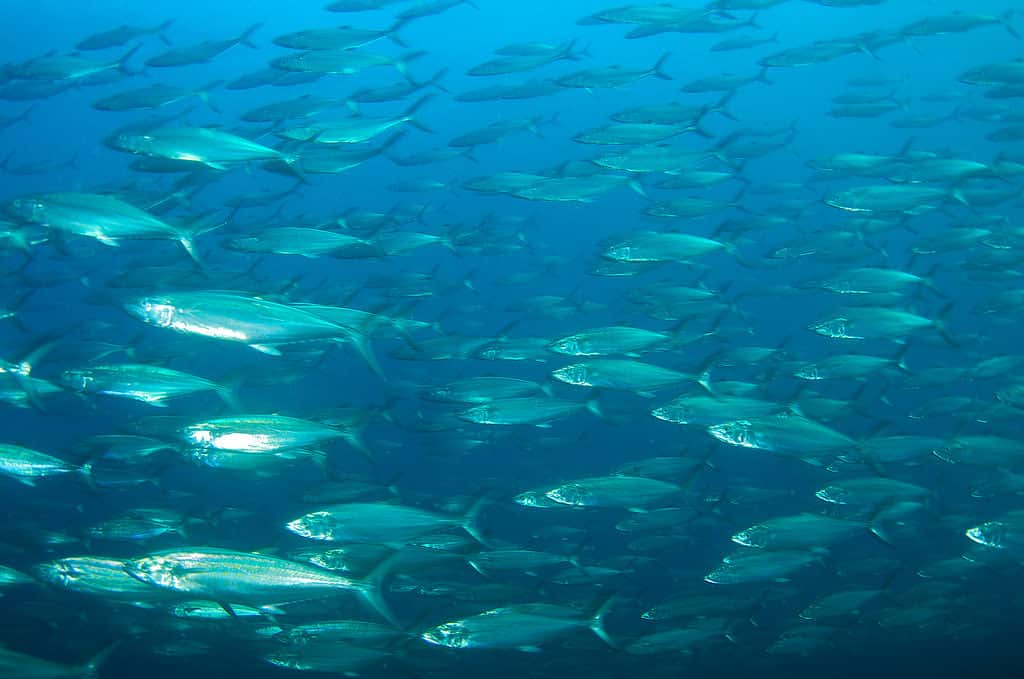
Mackerel is a common prey species of the blue shark.
©Peter Leahy/Shutterstock.com
Blue sharks exhibit fascinating migratory behaviors, often traveling long distances in search of food and suitable breeding grounds. They have a variable diet that includes a wide range of prey such as squid, small fish, and even larger fish like mackerel and herring. Their diet and foraging behavior can vary depending on the availability of prey in their current location.
Conservation
The International Union for Conservation of Nature (IUCN) classifies blue sharks as “Near Threatened“. They face several threats, including accidental bycatch in commercial fisheries. They are also a target for their fins, meat, and liver oil. The practice of shark finning, removing the fins and discarding the rest of the body, is a major concern for their population. This has led to regulations and bans on shark finning in many regions to help protect them.
Where Do Blue Sharks Live?
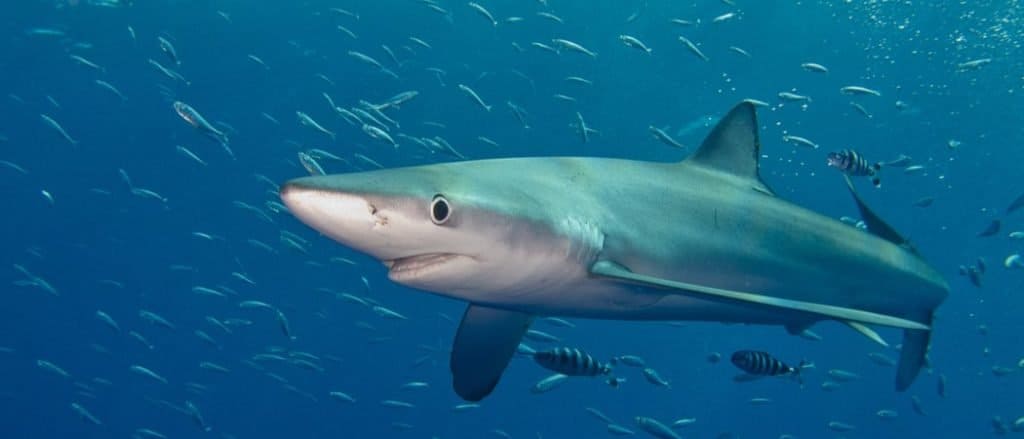
A Blue shark swims in the Atlantic ocean near Pico Island in Portugal.
©Anna L. e Marina Durante/Shutterstock.com
Blue sharks have a wide distribution and live in both temperate and tropical oceans around the world. In North America, blue sharks are common residents along the eastern coast of the United States and Canada, ranging from the Gulf of Maine down to the Gulf of Mexico. They are one of the most common large shark species in Atlantic Canada. Off the west coast, blue sharks live in various locations from California to British Columbia.
Largest Blue Shark Caught in Washington
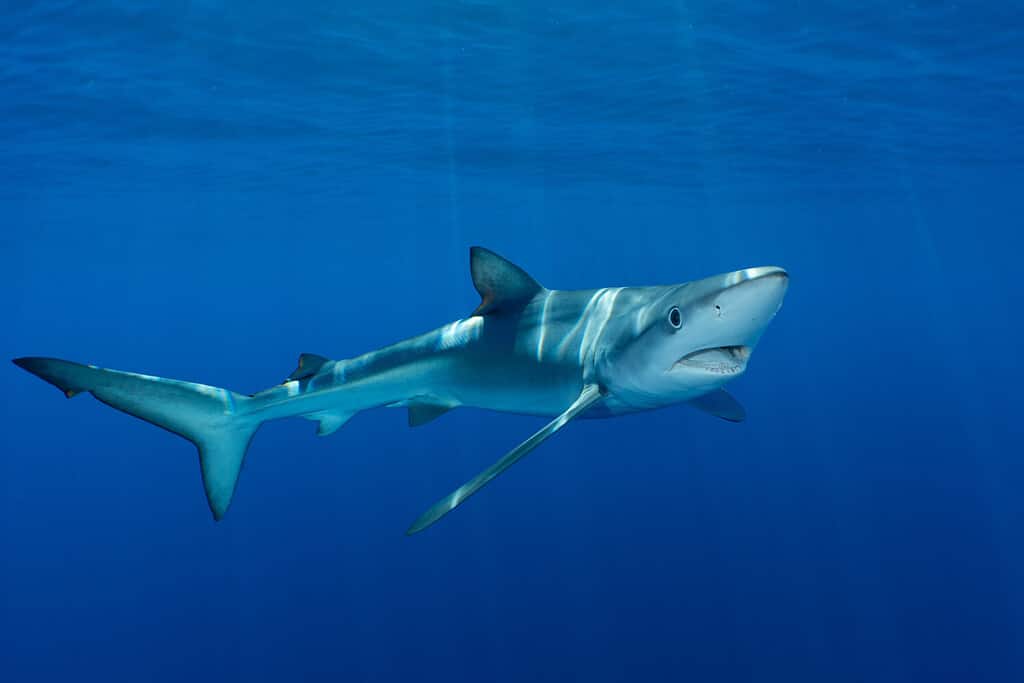
The largest shark ever caught in Washington was 64 pounds!
©Samy Kassem/Shutterstock.com
According to the Washington Department of Fish and Wildlife, the largest blue shark ever caught off the Washington coast was 64 pounds! This sizeable fish was caught by Marcus Totemeier in Grays Harbor County on July 27th, 2018. Although this does not compare to the largest shark species in Washington, a 64 pound blue shark is still very intimidating.
Sharks of this species can vary greatly in weight. Males typically weigh 60 to 121 pounds and large females can weigh 205 to 401 pounds. The largest blue shark in the world was caught by Roberto Godi on July 6th, 2001, off the coast of Porto Recanati, Italy. This behemoth weighed an incredible 528 pounds!
What is Bycatch?
Blue sharks, like many marine species, face a severe threat from bycatch. Bycatch is when commercial fisheries catch a species they were not targeting. If a fishing vessel is trawling for tuna, many other species, including sharks, are at risk of inadvertent capture. This is a major threat to several endangered species such as sea turtles, protected whale species, and other protected fish species. This threat causes declining populations and inhibits a vulnerable species ability to repopulate.
The photo featured at the top of this post is © Jan Finsterbusch/Shutterstock.com
Thank you for reading! Have some feedback for us? Contact the AZ Animals editorial team.



